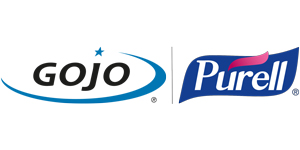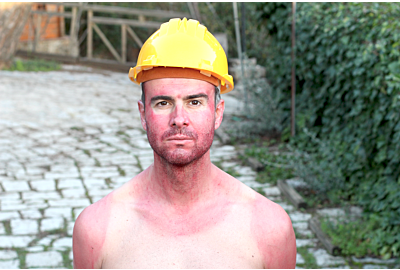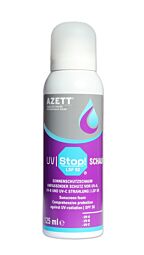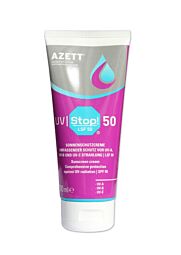With the start of spring just around the corner, the sun is finally peeking through the grey winter reality more often again. As soon as it returns, we go through the day feeling more cheerful and energised. However, despite the joy about the return of warmth, it is important to think about skin protection during increased sun exposure, even in the gentle warmth of spring. We often associate the risk of skin damage with beach holidays and summer swimming pool days, but it also plays a major role at work. For example, if you work outdoors or work with UVC radiation, you should think about skin protection all year round.
Skin cancer is an occupational disease
Certain forms of skin cancer have been officially included in the catalogue of recognised occupational diseases across Europe since 1 January 2015. These include squamous cell carcinoma and its precursors. If the cancer is caused by occupational UV radiation, those affected can contact their insurance company and have the disease recognised as an occupational disease. If the disease leads to incapacity for work or reduced performance, those affected can also receive financial benefits.1
Since this law was updated, employers must provide sun protection for their employees who work outdoors.
Choose the right sun protection factor
But before you use sun protection, you should first be sure which one is right for you. The sun protection factor (SPF) indicates how long sun creams, sun sprays and the like protect the skin from the negative effects of UV radiation, such as sunburn, premature skin ageing or even skin cancer. But what sun protection factor do you really need?
There are generally four different sun protection factor categories:
- SPF 6-10 - basic level of protection
- SPF 15-20 - medium level of protection
- SPF 30-50 - high level of protection
- SPF 50+ - very high level of protection
The fact is, everyone reacts differently to sunlight. Every skin type has a different self-protection time. The self-protection time is the period of time during which the skin can be exposed to the sun unprotected without developing sunburn. For example, lighter skin types with a shorter self-protection time need particularly strong protection from the sun compared to darker skin types. It is therefore important to choose the SPF according to your skin type.2
The general formula for this is: how long it takes your skin to burn normally (self-protection time) x sun protection factor in the products applied = minutes you can spend protected in the sun.
An example: if you have light-coloured skin, and burn fairly easily, you probably have a a self-protection time of about 10 minutes. That means that by applying SPF 50 sun cream, you can extend your time in the sun to 500 minutes. Regular moisturising to keep your skin in top form is a must.
Did you know: the maximum duration of your time in the sun cannot be extended by reapplying cream. Once the recommended time in the sun has elapsed, it is time to find a shadier spot to work, as our skin only regenerates overnight.
How does UV radiation affect the skin?
To prevent skin damage from the sun, it is also important to understand which sun rays affect our skin and how. A distinction is made here between UVA, B and C rays. UVA rays do not cause painful symptoms such as sunburn on the skin, but penetrate very deeply into the cells of the dermis. They promote the formation of free radicals, which can trigger sun allergies and lead to skin ageing and the formation of wrinkles. UVB rays "only" penetrate as far as the epidermis. They are responsible for a tanned complexion, but also for sunburn. As they can damage DNA directly, they can also cause skin cancer.3 UVC rays are not used in everyday sun protection, as these are so-called technical UV rays, which are generated during welding, for example. In a professional context, however, UVC rays should always be considered, as they can be particularly dangerous.
Sun protection is occupational safety
For sun protection at work, conventional products are often insufficient or unsuitable for daily use. Who wants to spend a working day with sticky skin or has time to constantly reapply sun cream? Azett's sun protection products are specially designed to meet the requirements of a professional context. They are easy to apply, absorb well and even offer protection against UVC radiation in the workplace. They are also highly water-resistant, even when sweating. Anti-inflammatory and moisturising ingredients also care for the skin, even with repeated use. With sun protection factor 50, they are ideal for working outdoors and under UVC radiation and can be used all over the body. For even easier application, there is also a sun protection foam in addition to the sun protection cream, which is particularly easy to apply to the face, beards and on hairy skin and lasts a long time.
1 https://www.arbeitssicherheit.de/themen/arbeitssicherheit/detail/weisser-hautkrebs-ist-als-berufskrankheit-anerkannt.html#:~:text=Bestimmte%20Formen%20des%20Hautkrebses%20sind,aktinische%20Keratosen)%20und%20das%20Bowenkarzinom
2 https://www.nivea.de/beratung/sonnenschutz/lichtschutzfaktor
3 https://www.nivea.de/beratung/sonnenschutz/lichtschutzfaktor















